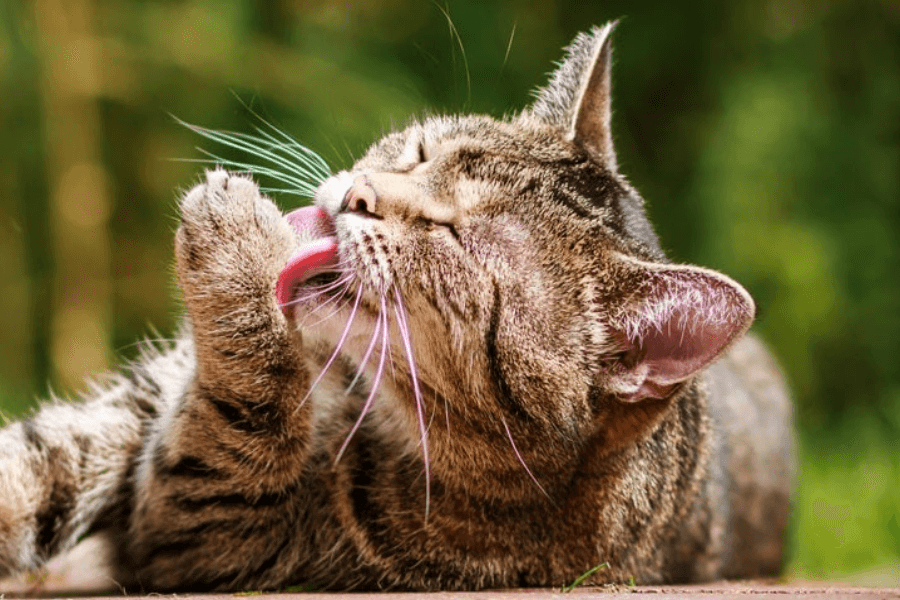How Can Cat Get Worms? How To Avoid Them

Worms are common intestinal parasites that can infect cats and kittens. While no pet owner wants to think about worms infesting their cat, it’s important to understand how cats get worms, what symptoms to watch for, and how to prevent worm infections. ![]()
In this article, we’ll cover the main types of feline intestinal worms, ways cats get infected, diagnosis and treatment, and most importantly, tips to protect your cat from worms.
Common Intestinal Worms in Cats

Roundworms are long, thin worms that look like spaghetti strands in a cat’s stool or vomit. They are the most common parasite found in kittens, but adult cats can get infected too.
Roundworms live in the small intestine, where they lay thousands of eggs that are then passed into the environment through the feces. The eggs can survive for years in soil, where cats may ingest them.
Roundworms steal nutrients from the food your cat eats, preventing proper absorption. A heavy roundworm infection can cause vomiting, diarrhea, weight loss, dull coat, and a pot-bellied appearance in kittens.
Tapeworms

Tapeworms are long, flat worms that attach to the wall of the small intestine using hook-like mouthparts. The worm segments will break off and pass through the feces.
These dried segments may be seen around the cat’s anus or in their stool. They often look like small grains of rice.
Cats get tapeworms from ingesting infected fleas during grooming. The tapeworm larvae living inside the flea are released into the cat’s intestines.
Tapeworm segments will continue to break off and be passed until the tapeworm itself dies or is eliminated.
Hookworms

Hookworms are small worms with hook-like teeth that bite into the intestinal wall and feed on the cat’s blood.
Hookworms are extremely dangerous, especially in kittens, because they can cause severe life-threatening anemia from blood loss.
Cats may get hookworms from ingesting larvae from contaminated soil or eating an infected rodent. Hookworm larvae can also burrow into the skin and travel to the intestines.
Other less common worms like whipworms and stomach worms can occasionally infect cats as well.
How Do Cats Get Infected With Intestinal Worms?

There are several ways cats can contract intestinal worms:
From the environment: Roundworm and hookworm eggs can survive in soil and be accidentally ingested when cats lick or sniff the ground. Gardens, playgrounds, and any areas where stray cats roam are prime sources.
From prey: When cats hunt and eat infected rodents, birds, rabbits, or even cockroaches, they can ingest worm larvae that will then mature in their digestive tract.
From fleas: If your cat swallows a flea infected with tapeworm larvae, usually while grooming, the larvae will develop into mature tapeworms in the intestines.
From their mother: Kittens can get roundworms through the milk when nursing from an infected mother cat. The larvae migrate to the lungs then get coughed up and swallowed.
Worm eggs and larvae are easily transmitted between pets sharing a home. Dogs and cats may not show any symptoms of worms but can still shed eggs in their feces.
Signs Your Cat May Have Intestinal Worms

Some common signs of an intestinal worm infection in cats include:
- Visible worms in vomit or stool
- Bloated or pot-bellied appearance
- Vomiting
- Diarrhea
- Weight loss despite increased appetite
- Dull, brittle coat
- Coughing (from larval migration in some worms)
- Pale gums or lethargy from anemia
However, adult cats can harbor worm infections without displaying any obvious symptoms. This makes routine vet visits and fecal screening critical for identifying and treating worms early.
Kittens typically show more pronounced symptoms because their bodies cannot handle a heavy parasite load.
If you see any signs of worms or just have a suspicion, bring a fresh fecal sample to your vet for testing.
Diagnosing and Treating Intestinal Worms

To check for intestinal worms, your vet will examine a stool sample under a microscope to look for worm eggs and larvae.
Once the type of worm is identified, your cat can be treated with a deworming medication that targets the specific parasite.
Most common cat worms can be easily eliminated with a prescription oral dewormer from your vet. More than one dose is often needed to fully clear the infection.
For severe cases, additional treatment may be required to address complications like malnutrition and anemia from blood loss.
After treatment, it’s ideal to run another fecal test to confirm the worms are fully gone before stopping medication. Your vet can advise you on the appropriate follow-up testing.
Kittens will usually require more frequent and prolonged deworming treatment than adult cats. Your vet can provide guidance on the deworming schedule appropriate for your cat’s age and health status.
How to Prevent Intestinal Worms in Cats

Stopping worms before they can infect your cat is the best approach. Here are some tips to prevent intestinal worms in cats:
Deworm kittens early and often: Kittens should be dewormed routinely starting at 2-3 weeks old and repeating every 2-4 weeks until around 6 months old.
Flea prevention: Use monthly flea prevention medication to stop tapeworm transmission. Tapeworms require ingesting an infected flea to complete their lifecycle.
Litter box hygiene: Scoop waste from the litter box daily and fully replace the litter weekly to prevent eggs and larvae from developing.
Annual fecal tests: Have your adult cat screened during yearly vet exams to catch any worms early.
Discuss preventatives: Talk to your vet about monthly oral or topical deworming medications to provide continuous protection.
Limit hunting: If possible, keep your cat indoors to reduce their exposure to worms from prey.
Being vigilant year-round is crucial, as intestinal worms pose an ongoing infection risk for outdoor cats in particular. But with prompt treatment and preventative care, you can keep your kitty worm-free.
The Bottom Line
Intestinal worms are a common challenge for cat owners. Understanding the routes of transmission allows you to take proactive steps to protect your cat.
Through routine vet care including fecal screening, deworming when needed, and prevention medication, you can help ensure worms don’t threaten your cat’s health.
If you notice any signs of possible worms, don’t hesitate to get it checked. Treatment is much easier the earlier worms are caught. With some diligence, you can outsmart these pesky parasites!
Tags
Share
Table Of Contents
Related Posts
Quick Links

